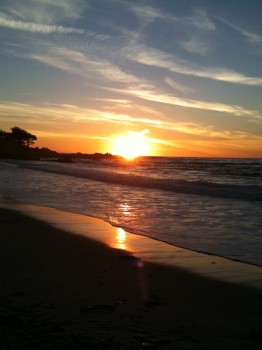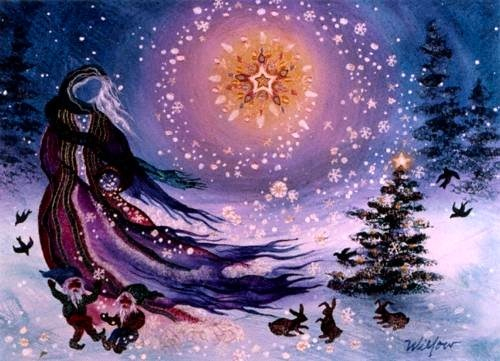Solstice means “Standing-still Sun”, and stems from the Latin words ‘sol’ for sun, and ‘sistere’ which means to cause to stand still. In the weeks approaching the Winter Solstice, the noontime sun rises to a progressively lower position in the sky in relation to the North pole.
At the time of the Solstice, the sun reaches its lowest point of elevation of the entire year. This low point is visibly imperceptible compared to the day before, and therefore the sun appears to stand still.
A Tilting Planet, and the Changing Seasons
The seasons of the year are caused by the tilt of the Earth’s axis. In other words, our seasons are not caused by our proximity to the Sun, but by the tilt of the Earth.
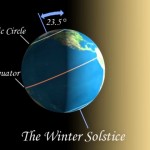 Our planet leans slightly on its axis like a spinning top that is frozen in an off-kilter position. As a result, during each half of the year one of the earth’s two hemispheres is more exposed to the sun than the other. This planetary tilt is the cause of variations in our climate as well as the drama and poetry of our seasons. It determines how many hours and minutes each hemisphere receives of precious sunlight each day.
Our planet leans slightly on its axis like a spinning top that is frozen in an off-kilter position. As a result, during each half of the year one of the earth’s two hemispheres is more exposed to the sun than the other. This planetary tilt is the cause of variations in our climate as well as the drama and poetry of our seasons. It determines how many hours and minutes each hemisphere receives of precious sunlight each day.
Summer occurs in the hemisphere that receives the more direct rays of the sun, while the opposite hemisphere experiences Winter.
Winter Solstice & Its Astrological Significance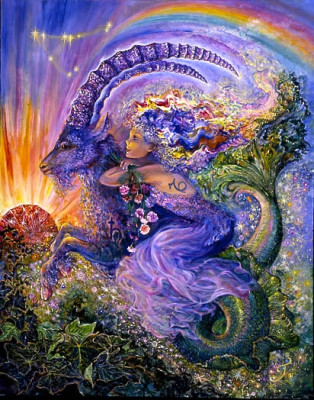
In the Northern Hemisphere we experience the Winter Solstice on December 21st, when our hemisphere leans the farthest away from the sun. This is the shortest day of the year and also signifies the first day of winter.
During the Winter Solstice the sun travels along its lowest arc in the sky and at noon shines directly over the Tropic of Capricorn. The solstice begins when the sun enters Capricorn, which is ruled by Saturn.
Capricorn is connected with themes of creating structure, establishing boundaries, and following rules. This highly organized astrological sign operates with a sense of competence and surety.
Saturn represents authority and his influence teaches us to respect our elders, follow the rules, and to do things right the first time in order to establish a solid foundation. Saturn promotes the virtues of patience, endurance, and responsibility.
The Winter Solstice is Special
The Winter Solstice is unique as it represents the longest night and the shortest day of the year. Metaphorically, the dark triumphs over light, but only for a brief period. The Solstice signals a turning point when the nights begin to grow shorter and the days grow longer until peaking again at Midsummer.
The Winter Solstice is a special time of year celebrated by cultures throughout the world. The modern winter holiday traditions of numerous countries have their roots in ancient Solstice celebrations.
Many of the customs associated with the Winter Solstice and other midwinter festivals derive from stories of a mighty battle between the Dark and the Light, resulting in triumph by the Light. Other traditions record this as the time a savior (the Sun-Child) is born to a virgin mother.
Nearly all cultures consider this period of the shortest day as a time of magic.
Ancient Rome and the Winter Solstice
Midwinter’s Day has been an important time for celebration in the northern latitudes throughout the ages. The Romans called it Dies Natalis Invicti Solis, the Birthday of the Unconquered Sun, to signify the success of the Sun in overcoming Darkness.
The Roman Solstice holiday, Saturnalia, was celebrated as a gigantic fair and a festival of the home. The halls of houses were decked with boughs of laurel and evergreen trees, and lamps were kept burning to ward off the spirits of darkness. Schools were closed, the army rested, and criminal executions were suspended. Friends and family visited one another bestowing gifts of good fortune including fruit, cakes, candles, dolls, jewelry, and incense. Temples were decorated with evergreens symbolizing the continuity of life.
Roman masters feasted with slaves who were given the freedom to act as they desired and speak their minds. People enjoyed riotous merry-making and a Mock King was appointed to oversee the revelry. Processions of people with masked or blackened faces and fantastical hats danced through the streets.
The open hearted spirit of love and acceptance associated with our Christmas season has its roots in this Roman celebration of good tidings and cheer.
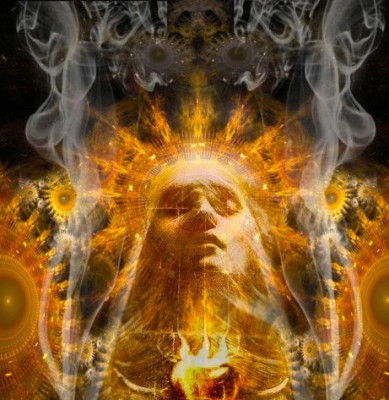 Winter Solstice Customs & Celebrations
Winter Solstice Customs & Celebrations
In many cultures, the customs practiced at Christmas date back to pre-Christian times and originated with the Winter Solstice. A number of these practices involved divination or foretelling the future at this magical time.
The early Germans built a stone altar to honor Hertha, the goddess of domesticity and the home. They believed that Hertha was able to descend through the smoke of a fire stoked by fir boughs on the altar. She would guide those who were wise in Saga lore to foretell the fortunes of guests at the celebratory feast.
In Spain, the guests at a family gathering practice an old custom that is a holdover from Roman days. Family and friends write their names on a slip of paper which they place in a bowl called ‘the urn of fate’. The slips of paper are drawn out two at a time, and those whose names are so joined are to be devoted friends for the following year.
Russia has a Christmas divination ceremony for a young woman to foretell her future. She sits in a darkened room with two lighted candles and two mirrors situated so that one reflects the candlelight into the other. The girl looks to find the seventh reflection, then gazes at it until her future is revealed.
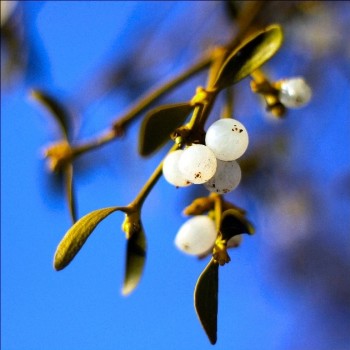 In pagan Scandinavia the winter festival was called the yule (or juul). People drank mead around the bonfires made from yule logs, listening to minstrel-poets singing ancient legends. It was believed that the yule log had the magical effect of helping the sun to shine more brightly. Scandinavians considered mistletoe to be sacred because it mysteriously grew on their most sacred tree, the oak. A spray of mistletoe was ceremoniously cut and given to each family to be hung in their doorway as good luck.
In pagan Scandinavia the winter festival was called the yule (or juul). People drank mead around the bonfires made from yule logs, listening to minstrel-poets singing ancient legends. It was believed that the yule log had the magical effect of helping the sun to shine more brightly. Scandinavians considered mistletoe to be sacred because it mysteriously grew on their most sacred tree, the oak. A spray of mistletoe was ceremoniously cut and given to each family to be hung in their doorway as good luck.
The Celtic Druids also regarded mistletoe as sacred, and called it ‘All-Heal’. Druid priests would cut sprigs from the trees with a golden sickle and distribute it to their people. It was hung over a doorway or in a room as an offering of goodwill to visitors. Kissing under the mistletoe was a pledge of friendship.
In Nova Scotia, Children’s Day is celebrated at the Winter Solstice to honor children and to bring warmth, light, and cheerfulness into the darkest time of the year. Nova Scotians decorate with outdoor colored lights to celebrate the mid-winter season and to offset the long, frigid, dark nights of this far-northern territory. They find it cheering to see beautiful lights sparkling and glittering in the crisp, crystal clear air.
In present-day Scandinavia, some families place all of their shoes together during seasonal celebrations. This custom is thought to cause family members to live in harmony throughout the year.
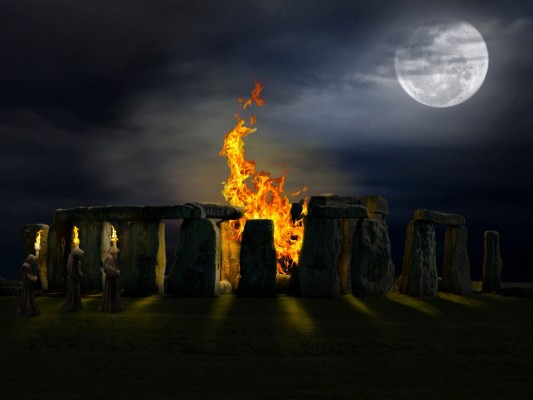 Solstice Customs and Practices of the Druids
Solstice Customs and Practices of the Druids
The Druids formed a highly respected professional class within ancient Celtic societies in Gaul, Britain, Ireland, and other parts of Western Europe. They were responsible for organizing worship and sacrifices, divination, and judicial procedures. They led all public rituals, which were normally held within fenced groves of sacred trees.
As ambassadors, Druids were held in such high regard that if they intervened between two armies they could stop the ensuing battle. They also performed the functions of teachers, astronomers, genealogists, philosophers, musicians, poets, theologians, and scientists.
Druid instruction was shrouded in secrecy and was conducted in caves and forests. Druidic lore consisted of a large number of verses learned by heart, and it was believed that practitioners labored for up to twenty years to complete their course of study.
Ancient Druids called the Winter Solstice “Alban Arthuan”. This was considered to be the time of the death of the old sun and the birth of the dark-half of the year. The solstice marked the end of the month of the Elder Tree and the start of the month of the Birch. The three days before Yule represented a magical time associated with transformation. During these ‘Serpent Days’, the Elder and Birch Trees stood guard at the entrance to the Celtic underworld where all life was formed. The Sun God would journey through the underworld to learn the secrets of death and life and to recover departed souls to be reincarnated.
Native Americans and the Solstice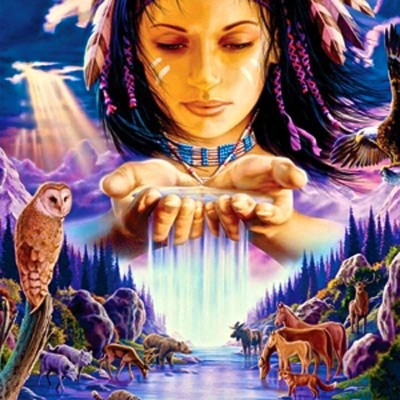
Native Americans observe both the Summer and Winter Solstices. Although specific details of their rituals differ among the many tribes, the rites are built around the sun, the coming new year, and the rebirth of vegetation in the spring. Winter Solstice rites include retreats, altars, voluntary emesis, prayers for increased abundance, and prayer-stick making.
The ritual of creating prayer sticks is a way for Native Americans to honor their ancestors and belief system, and serves as a means of offering prayer and gratitude. The sticks are crafted by everyone in a family for four days prior to the solstice. On solstice-day, the prayer sticks are planted by each person in small holes dug by the head of the household. Each prayer stick is named for an ancestor or deity.
The Southwest Pueblo, Zuni, and Hopi tribes celebrate the Soyal Solstice Ceremony, which is also called the Great Feast of the Winter Solstice. The Native American name for this important ceremony is actually ‘Soyalangwul’, from which the term ‘Soyal is derived. The ceremony is held on the day of the Solstice and its purpose is to bring the sun back from its long winter slumber. It is celebrated over a period of 16 days which start with prayers and supplications, and ends with a feast and Kachina Dance.
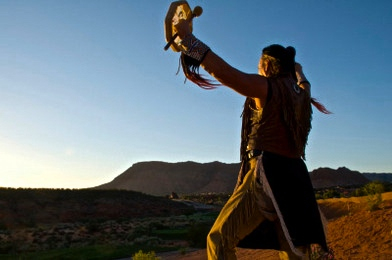 The Soyal Solstice Ceremony is practiced to turn the sun back toward its summer path and renew the life stages for the coming year. The Hopi and Zuni believe that the sun god has traveled the furthest distance from the tribe at the time of the Winter Solstice, so warriors and other powerful tribal members are tasked to entice the sun back. They perform Kachina dances as part of the ritual. A Kachina is a powerful being or spirit who, if given due veneration and proper respect, can use their powers for the good and well being of the people. They were believed to bring rainfall, healing, fertility, or protection as needed.
The Soyal Solstice Ceremony is practiced to turn the sun back toward its summer path and renew the life stages for the coming year. The Hopi and Zuni believe that the sun god has traveled the furthest distance from the tribe at the time of the Winter Solstice, so warriors and other powerful tribal members are tasked to entice the sun back. They perform Kachina dances as part of the ritual. A Kachina is a powerful being or spirit who, if given due veneration and proper respect, can use their powers for the good and well being of the people. They were believed to bring rainfall, healing, fertility, or protection as needed.
The Soyal Ceremony is of particular importance to the Hopi tribe. They are dedicated to giving aid and direction to the sun as it prepares to ‘return’ and give strength to budding life. Their ceremonial activities include prayer-stick making, purification rituals, and a concluding rabbit hunt, feast, and blessing.
Throughout Northern America there are countless stone structures created by Natives in the past to detect the solstices and equinoxes. One of these structures was named ‘Calendar One’ by its present day discoverer. It is in a natural amphitheater in Vermont spread out over 20 acres. From a stone enclosure in the center of the bowl, a viewer can see a number of vertical rocks and natural features on the horizon, which form the edge of the bowl. At the time of the solstices and equinoxes, the sun rises and sets at notches or peaks on the ridge which surrounds this man-made calendar.
Rituals of Reverence: Sitting in the Dark, Letting Go, and Turning Inward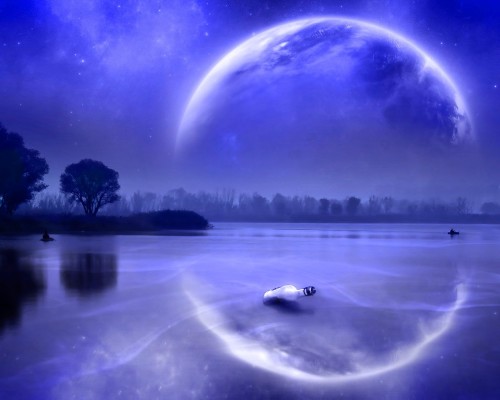
Earlier Solstice traditions may have focused on the battle between the Dark and the Light, but we now revere both of these essences as valuable forces within nature. Darkness and light are two parts of the same Whole, living in dynamic harmony to form perfect balance. Together they offer us invaluable lessons about contrast. We may therefore decide to ‘honor the Dark before calling in the Light’.
On any of the nights surrounding the Solstice, we can pay homage to Darkness by sitting in meditation in the dark. As we align our consciousness with the essence of darkness we become aware that black represents the formlessness from which all things originate. It is the receptive polarity of the color spectrum and relates to the feminine aspect of our nature. Darkness absorbs, withdraws, stores away, and protects. It is associated with consciousness and introspection, representing mystery, secret depths, and hidden longings.
Without darkness there can be no light. At the completion of this meditation, we can light a candle to symbolize our intention to call in the Light.
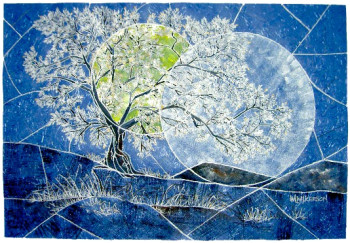 The Winter Solstice is a natural time for letting go and saying farewell. It offers us an opportunity to release resentments, regrets, and outdated habits into the darkness, knowing that these thought-forms will be transformed into raw energy for use in productive ways. We can write our ‘to be released’ list in our journals or write them out on slips of paper to be burned in the Yule fire. We can also use the ritual of sending holiday cards to make amends to people we have hurt or neglected during the year as a way of clearing the energies of guilt or regret.
The Winter Solstice is a natural time for letting go and saying farewell. It offers us an opportunity to release resentments, regrets, and outdated habits into the darkness, knowing that these thought-forms will be transformed into raw energy for use in productive ways. We can write our ‘to be released’ list in our journals or write them out on slips of paper to be burned in the Yule fire. We can also use the ritual of sending holiday cards to make amends to people we have hurt or neglected during the year as a way of clearing the energies of guilt or regret.
Winter is the season when animals hibernate and nature sleeps. We too can turn inward to reflect on our lives and develop a sense of clarity about the year ahead.
Many of us believe that we should enjoy ourselves as much as possible during the time of the Winter Solstice because this will bring light and ‘lightness’ back into the world. Traditions from all over the globe suggest numerous festive ways to celebrate. These include visiting friends, feasting, drinking, giving gifts, dressing up, gambling, playing pranks, fornicating, putting on plays, and staying up all night.
In other words, during the dark of winter we are encouraged to invoke all of the richest forces of pleasure and love which make life worth living!
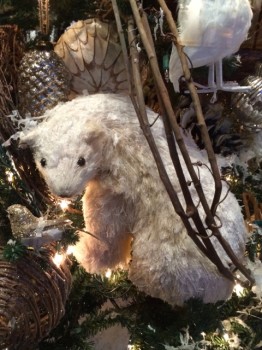 We Can Bring More Light Into the World
We Can Bring More Light Into the World
When we light our candles and fires, we may do so with the intention of bringing light into the world. We can awaken a desire to explore new ways in which to make the planet lighter and happier.
As we celebrate the Winter Solstice, we can ask ourselves how we presently bring light, love, and joy into the lives of those around us. We can choose to make a conscious effort to increase the amount of light, laughter, and love we create and share within our lives.
No matter how we celebrate, we honor the Winter Solstice by our attention and intention. Please join me in the spirit of the solstice to welcome the re-emergence of the Unconquered Sun. I wish you the brightest tidings of light, love, laughter, and joy this Winter Season!
For more information on the Solstice, here are a few references used in this blog: http://www.telegraph.co.uk/christmas/0/winter-solstice-shortest-day-year-time/ https://www.almanac.com/content/first-day-winter-winter-solstice https://en.wikipedia.org/wiki/Winter_solstice
Most of the photographs used on my blog were taken by the author and additional images were collected from free download sites and include material from technologic.net, earth sky, and Llewellyn.

